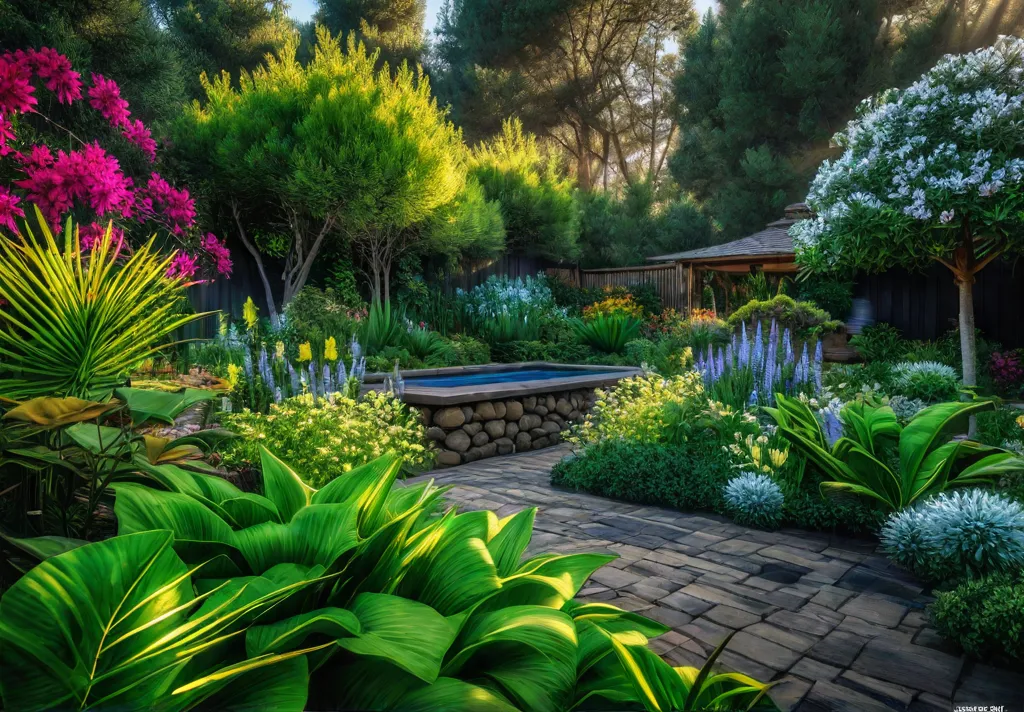Have you ever wandered through a vibrant garden, mesmerized by the gentle flutter of butterfly wings and the melodic trill of songbirds? There’s something simply magical about being immersed in nature’s living kaleidoscope. But did you know you can recreate that enchanting experience in your backyard?
As someone who grew up surrounded by the rugged beauty of West Texas, I’ve spent years perfecting the art of designing outdoor spaces that harmonize with their natural surroundings. And let me tell you, there’s nothing more rewarding than cultivating your private oasis brimming with biodiversity.
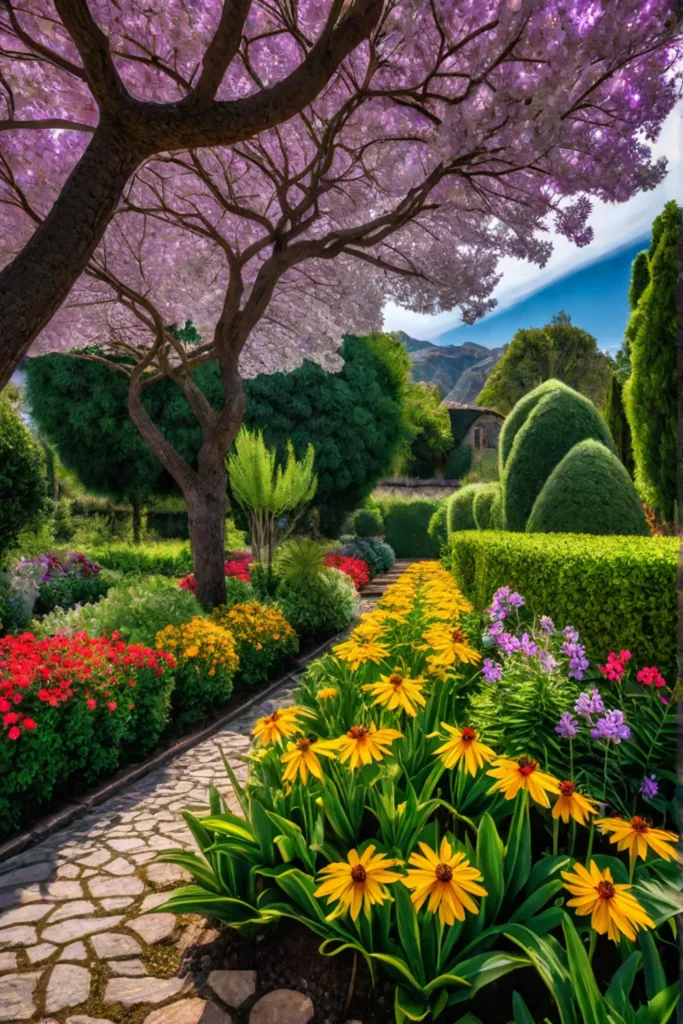
So, what’s the secret to attracting birds, butterflies, bees, and all sorts of fascinating critters? It starts with choosing the right plants – native species that provide food and shelter for local wildlife. From there, you can thoughtfully layer other enticing elements like water features, nesting boxes, and pesticide-free gardening practices. Before you know it, your backyard will transform into a thriving ecosystem of sights, sounds, and natural wonder.
The Importance of Native Plants
Did you know many native insects can only feed on specific native plant species? It’s just one example of how deeply interconnected our local flora and fauna are. As someone who grew up surrounded by the rugged beauty of West Texas, I’ve always been drawn to design that celebrates that natural harmony. That’s why choosing the right plants for your garden is crucial to attracting biodiversity and supporting your local ecosystem.
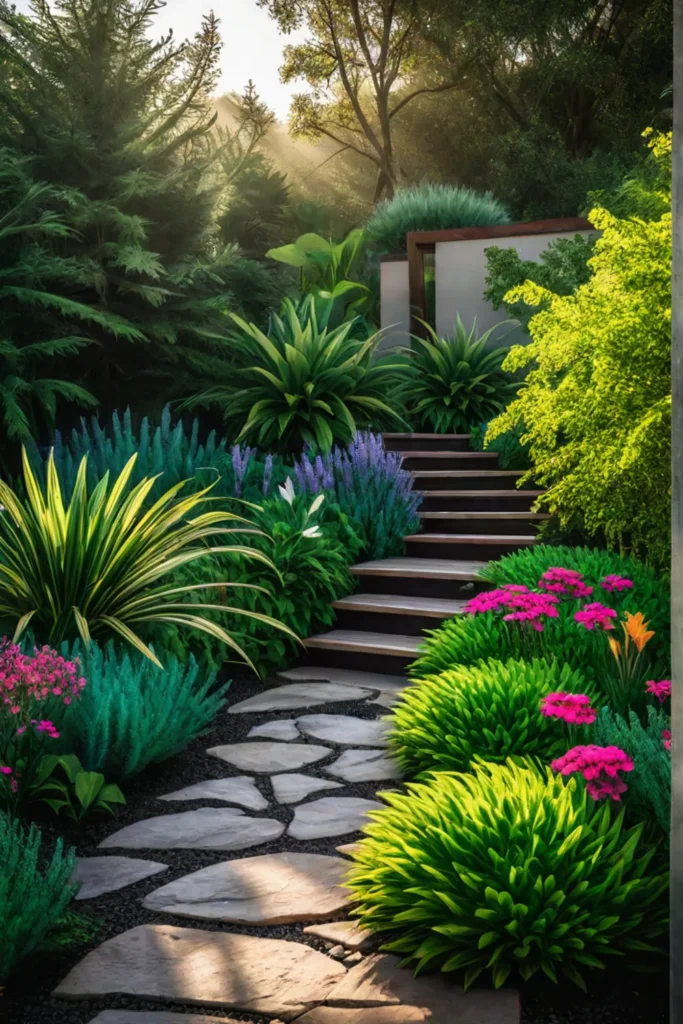
Why Native Plants Matter
Native plants have evolved over thousands of years to thrive in the soils and climate of a particular region. This makes them perfectly adapted to survive with minimal resources like water and fertilizer. More importantly, native plants provide essential food and shelter for native wildlife species, promoting a balanced, sustainable environment. Food webs depend on these specialized plant communities, from insects and birds to mammals and reptiles.
Finding the Right Plants
So, how do you identify which plants are native heroes for your neck of the woods? My top tip is to consult local nurseries, native plant societies or online resources like the National Wildlife Federation’s Native Plant Finder. They’ll point you towards resilient, drought-tolerant beauties that will make your garden a haven for local critters. And don’t just stick to one type – incorporate a diverse variety with different blooming periods to keep that buffet stocked year-round.
Creating Layers
Once you’ve selected your native all-stars, consider creating a layered habitat with plants of varying heights, structures, and bloom times. Intersperse towering species like oaks or pines with smaller flowering shrubs and groundcovers. This vertical diversity provides shelter, food, and nesting spots for all sorts of visitors. Don’t forget to leave some open areas for ground-dwelling creatures, too!
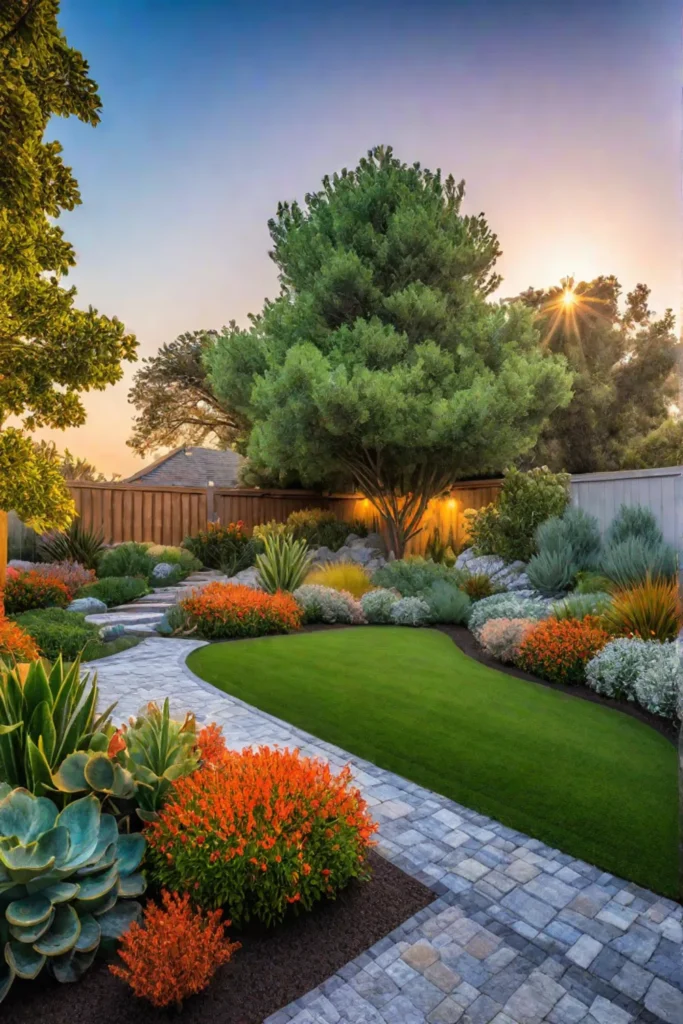
Committing to native plants is one of the most impactful choices for your local environment. They’re low-maintenance, eco-friendly and will transform your outdoor space into a biodiverse oasis. And who knows – you might discover some surprising new-winged neighbors! Let’s discuss creating the perfect bird-friendly habitat for feathered friends next.
Creating a Bird-Friendly Habitat
Imagine waking up to the sweet melodies of songbirds serenading you from just outside your window. There’s something so grounding about being surrounded by nature’s winged entertainers as you sip your morning coffee. If you want to attract more feathered friends to your backyard oasis, I have some tips to turn your outdoor space into an avian paradise.
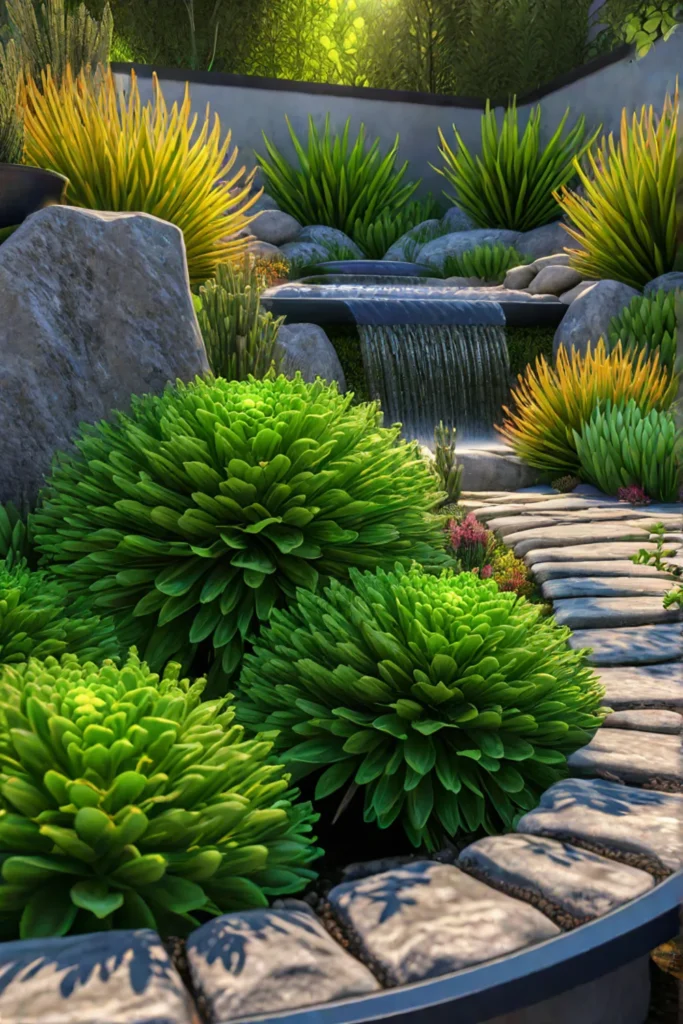
Attracting Birds with Food and Water
One of the easiest ways to entice birds is by providing an array of their favorite treats. Install a few feeders with an assortment of seed types like sunflower, nyjer, and millet to cater to different species’ tastes. Black oil sunflower seeds are a fan favorite for many birds. Don’t forget a steady water source – a basic bird bath or a recirculating fountain. Birds need water for drinking and keeping their feathers in tip-top shape.
Providing Shelter and Nesting Sites
In addition to room and board, our feathered pals need a cozy place to call home. Plant native trees, shrubs, and bushes to create a sheltered habitat with plenty of nooks for nesting. Adding a few birdhouses designed for local species like chickadees or bluebirds is an open invitation for avian tenants. Just research the proper dimensions for whatever birds you hope to host.
Avoiding Hazards and Embracing Nature
While sprucing up for your new residents, ditch any pesticides or herbicides that could harm them. Embrace a few weeds and insects here and there – they’re just more items on the menu! Creating this holistic, bird-friendly environment allows you to fully appreciate the beauty and biodiversity that come along with welcoming wildlife into your backyard sanctuary.
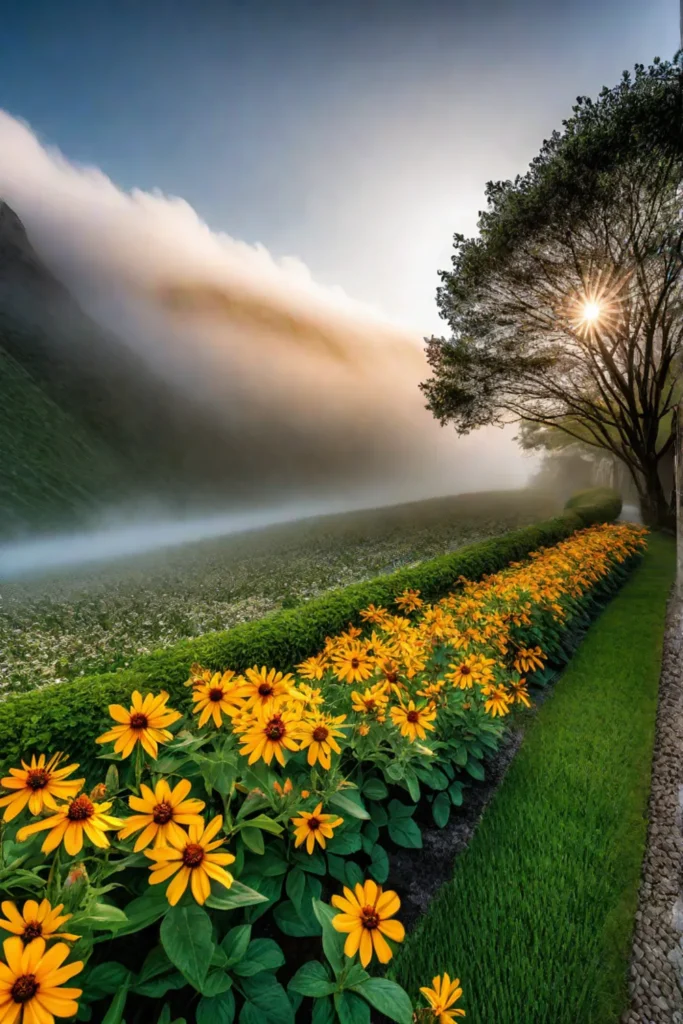
With a few simple additions like feeders, baths, and nesting boxes paired with lush native plants, you’ll be amazed at how quickly birds flock to your new certified habitat. There’s nothing quite like enjoying that morning cup of joe to the soundtrack of chirps and trills echoing all around you.
The next step to luring nature’s most vibrant pollinators is designing a butterfly garden tailored to your local species.
Designing a Butterfly Garden
What if your backyard could become a vibrant stage for nature’s most graceful aerial dancers? With some thoughtful planning, you can roll out the welcome mat for butterflies by creating a habitat perfectly tailored to their needs. After all, there’s nothing quite like the joy of watching these winged beauties flit from flower to flower on a sunny afternoon.
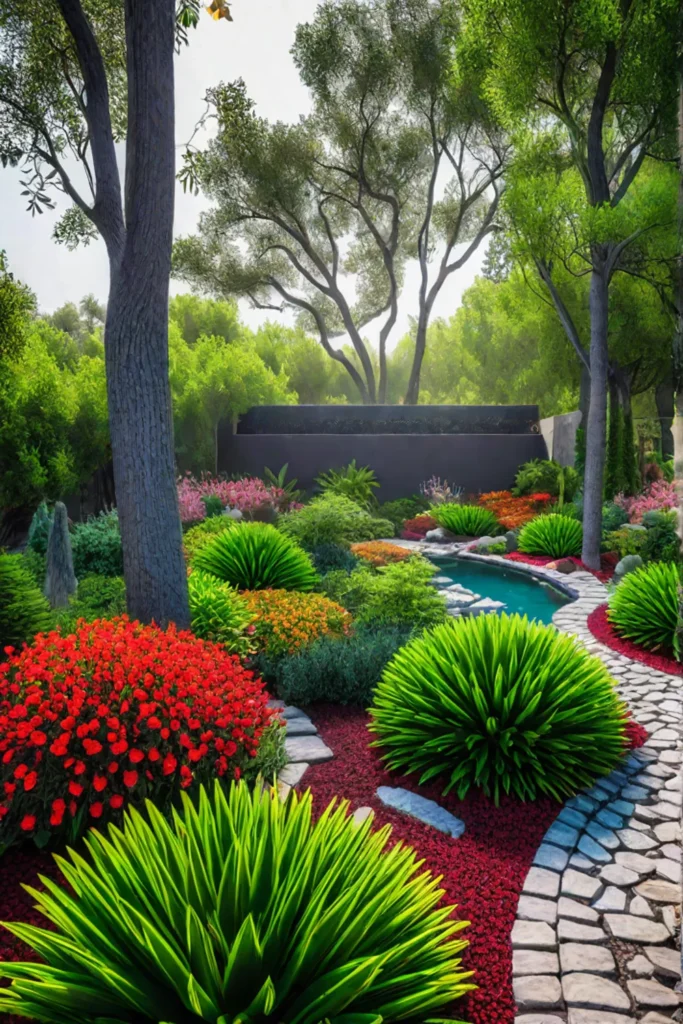
Attracting Butterflies with Nectar Plants
Adult butterflies are constantly on the hunt for energy-rich nectar from flowering plants. To keep them fueled up, incorporate a variety of nectar-rich bloomers like coneflowers, zinnias, and the aptly named butterfly weed. These bright, showy flowers will beckon butterflies from afar with their sweet, irresistible scents. Be sure to choose a sunny spot – butterflies love basking in the warm rays as they sip their floral drinks.
Supporting Butterfly Life Cycle with Host Plants
While colorful nectar sources are key for mature butterflies, don’t forget the hungry caterpillars! Each butterfly species relies on specific host plants for their young to munch on. For example, the iconic monarch butterflies need access to milkweed, while the striking swallowtails require parsley or dill. By including these caterpillar buffets, you’ll nurture the entire butterfly life cycle in your backyard.
Creating a Pesticide-Free Paradise
One of the most important elements of a butterfly-friendly garden is keeping it free from harmful pesticides and chemicals. These can be incredibly toxic to our winged friends and disrupt their delicate ecosystem. Embrace organic gardening practices and let a few weeds go – the butterflies will thank you! You can also provide shallow dishes of water and position flat rocks in sunny areas to give them a perfect place to rest and warm their wings.
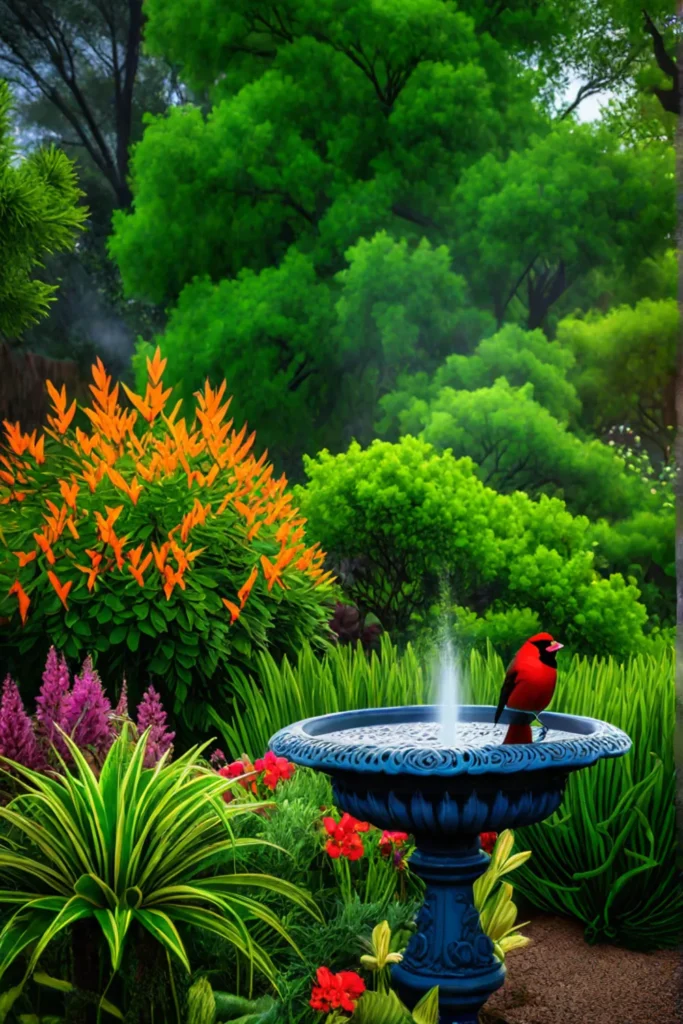
With a thoughtful combination of nectar plants, host plants, and a pesticide-free zone, your garden will become an irresistible destination for butterflies near and far. Soon, you’ll be able to enjoy their whimsical dances from the comfort of your backyard oasis. But don’t stop there – the next step is welcoming another crucial pollinator to your outdoor sanctuary: the humble, hard-working bee.
Welcoming Bees with Bee-Friendly Flowers
Did you know that bees pollinate over 75% of the flowering plants and crops we rely on for food? Without these industrious little pollinators, our gardens and farms would be barren. That’s why creating a bee-friendly backyard sanctuary is important for supporting local bee populations.
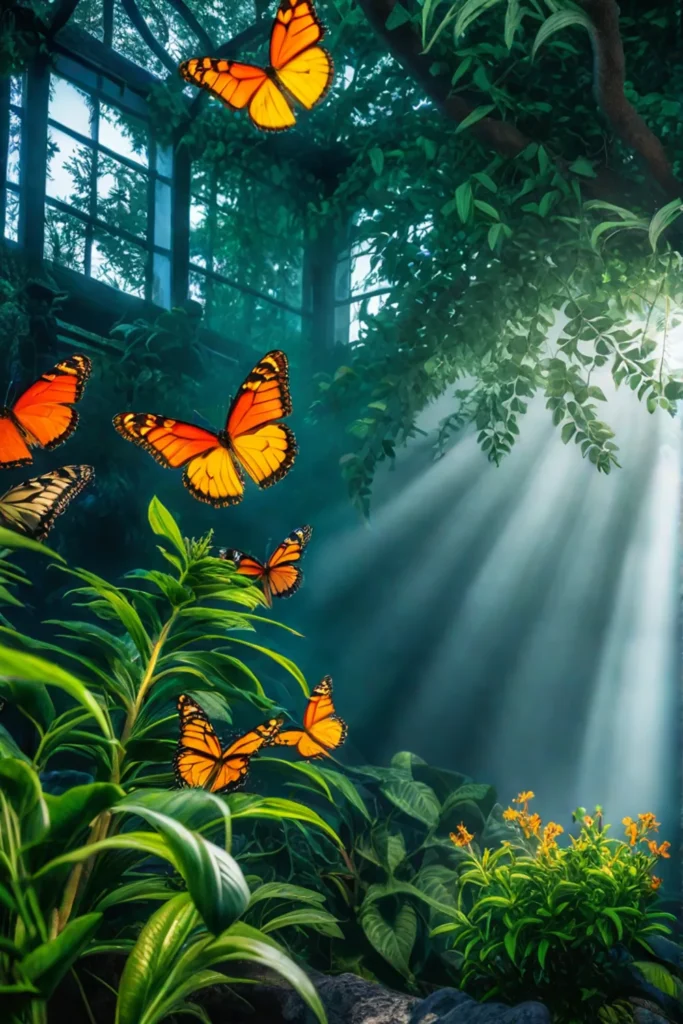
Choosing the Right Flowers for Bees
Not all flowers are equally attractive to bees. To draw in these vital pollinators, focus on planting single-flowered varieties with various colors and shapes. Bees are drawn to flowers like lavender, sunflowers, and bee balm that provide easy access to their pollen and nectar rewards. Different bee species also have varying tongue lengths, so diverse flower types will cater to their preferences.
Creating a Continuous Bloom
Bees need food sources throughout the growing season, so plant a combination of early, mid-season, and late bloomers. This consistent floral buffet will sustain the bees and ensure they keep revisiting your yard. Don’t forget to include some fall-blooming flowers for those last warm days.
Providing a Safe Environment
While rolling out the welcome mat with bee-friendly blooms, avoid using any pesticides or chemicals that could potentially harm these beneficial insects. Bees are incredibly sensitive to toxins. Instead, practice organic gardening methods and provide a shallow water source with pebbles where they can safely hydrate.
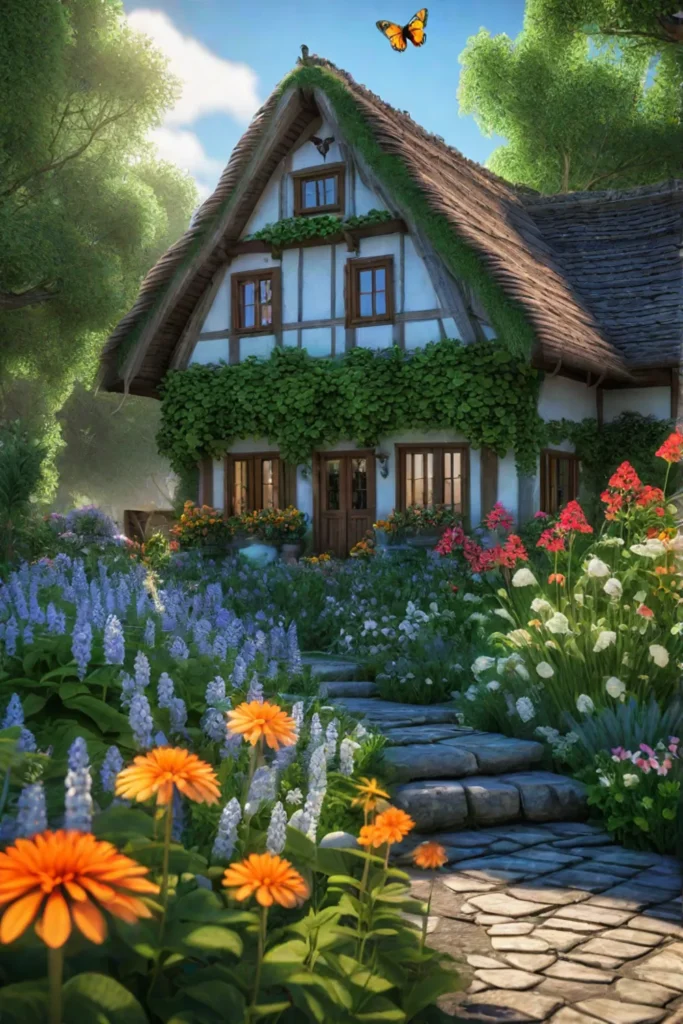
You’ll be rewarded with the cheerful buzz of bees pollinating your garden by thoughtfully selecting the right flowers and creating a pesticide-free oasis. These unsung heroes will enhance your yard’s productivity while you enjoy watching nature’s dance unfold.
With a little planning, your backyard can become a haven for our precious pollinators and showcase natural beauty.
Providing Water Sources for Wildlife
Do you hear that peaceful trickle? That’s the sound of life flowing into your backyard habitat. Freshwater sources, whether simple birdbaths or elaborate ponds are a must for attracting our fluttering, flying friends. Offering hydration hotspots is key to supporting local biodiversity.
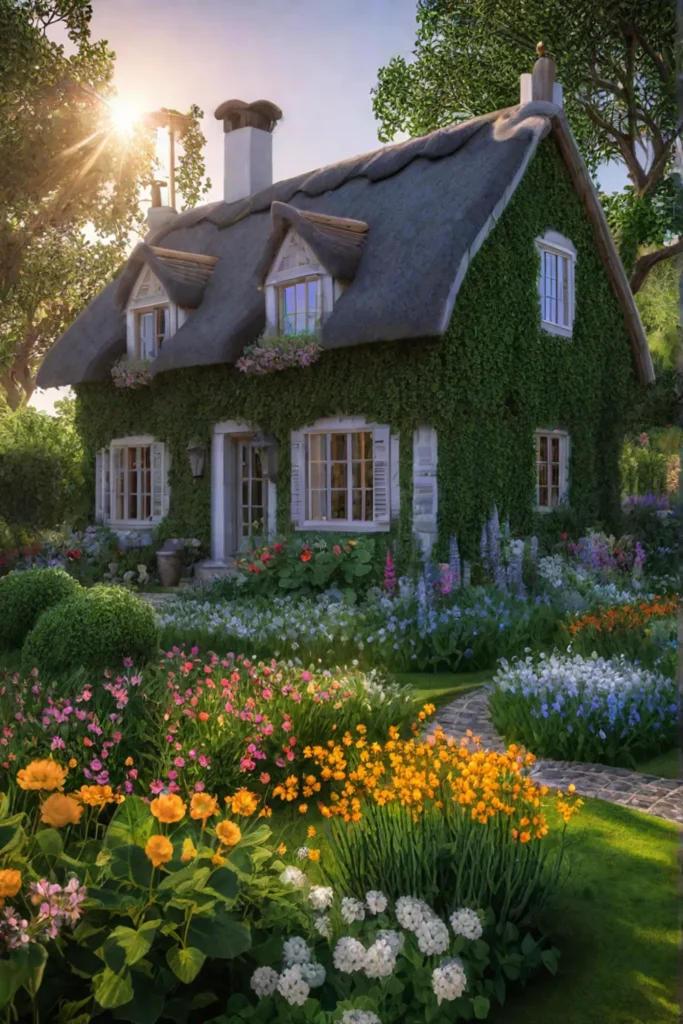
Different Types of Water Features
Let’s start with the basics – birdbaths. These classic bird-approved basins come in all shapes and sizes. I’m partial to ones with a rough surface for easy gripping and shallow sloped sides for safe sipping. But you can take it up a notch by adding a bubbler or mister for extra allure.
Set out shallow dishes filled with pebbles and water for our pollinator pals. Bees and butterflies will happily perch on the rocks as they rehydrate and refuel. Or take it even further by digging a small pond! Aquatic plants add lovely texture while providing shelter and food sources.
Maintaining Water Sources for Wildlife
Most people overlook the crucial steps of regular cleaning and water changes. Stagnant, murky water is a mosquito-breeding paradise. Do a full refresh every few days, giving containers a good scrub to remove algae buildup. With routine maintenance, your water features will stay safe and healthy oases.
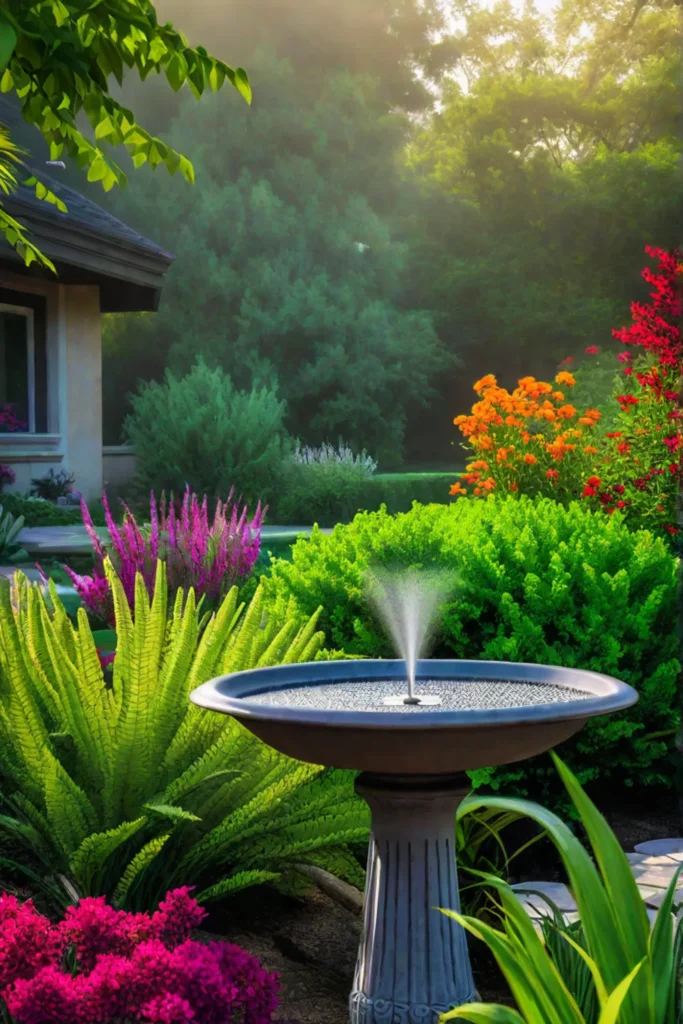
You know I love finding ways to sustainably source materials. For birdbaths and dishes, I’m always searching for vintage finds or fun DIY projects using reclaimed objects. Get creative!
With the soothing sounds of flowing water and the flutter of winged visitors, your outdoor oasis will truly come alive. Hydration stations for all are a must in my book!
Conclusion
By now, you’ve learned how a few simple additions can turn your backyard into a certified wildlife habitat brimming with life. Install a few feeders and nesting boxes to beckon birds with a full-service cafe and cozy accommodations. Design a colorful butterfly garden with a buffet of nectar-rich blooms and caterpillar-approved host plants. And don’t forget to lay out the welcome mat for our hard-working pollinator friends with a sunny patch of bee-friendly flowers.
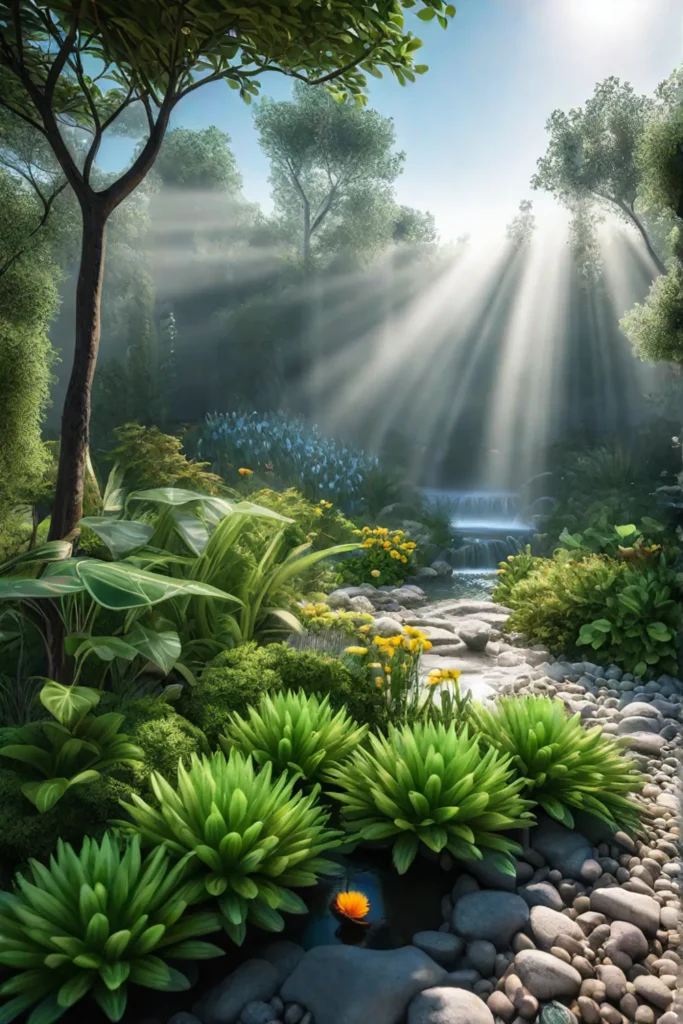
But the magic happens when you combine all these elements into one holistic, interconnected sanctuary. With a thoughtful array of native plants, freshwater sources, and pesticide-free practices, your backyard will become an oasis of biodiversity outside your doorstep. Imagine waking up to a vibrant tableau of butterflies dancing from flower to flower as songbirds serenade you from the trees. It’s an immersive, multi-sensory experience that will ground you and reconnect you with the beauty of nature.
So roll up those sleeves and get ready to embrace your green thumb! With a little patience and care, you have the power to create your paradise, teeming with life’s most whimsical winged wonders. I can’t wait to see what fascinating new neighbors you attract.
